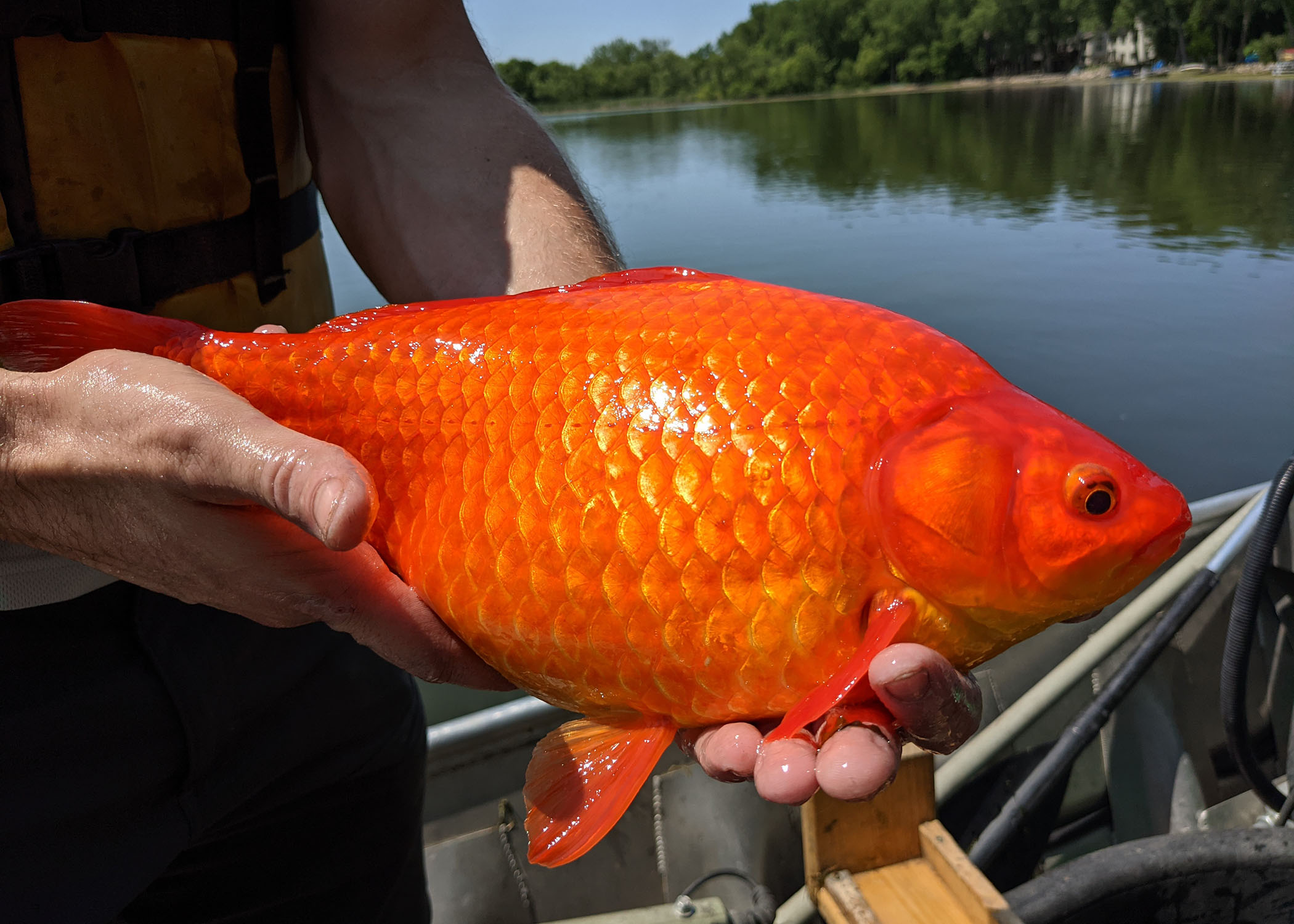Aquariums or fishbowls at home tend to enhance the beauty of the room. Colourful and all kinds of fishes swimming to and fro from one end of the glass enclosure to the other end in the backdrop of an aesthetically decorated aquarium keep the room lively. But have you ever wondered what happens to them after you decide to dump them in lakes? They grow to more than one foot.
After goldfishes, more than one foot in size was discovered from a local lake in Minnesota, authorities appealed to aquarium owners to stop releasing pet fish into waterways.
Officials in Burnsville, about 15 miles south of Minneapolis, said released goldfish can grow to several times their normal size and wreak havoc on indigenous species.
“Please don’t release your pet goldfish into ponds and lakes! They grow bigger than you think and contribute to poor water quality by mucking up the bottom sediments and uprooting plants,” the authorities tweeted.
Last year in November, officials in Carver county removed as many as 50,000 goldfish from local waters. Talking about goldfish, the county water management manager said that they are an understudied species and have a high potential to negatively impact the lake’s water quality.
Goldfish, a member of the carp family, can easily reproduce and survive through low levels of oxygen during the Minnesota winter, researchers say.
“A few goldfish might seem to some like a harmless addition to the local water body – but they’re not,” the Minnesota department of natural resources said.
Ecological destruction brought about by the released pet into the water bodies is not new, The Guardian reported. Carnivorous lionfish that were released by Florida pet owners in 1992 killed off dozens of Caribbean species, allowing seaweed to overtake the reefs.
Goldfish have received less attention than other invasive species, including Asian carp and zebra mussels. However, warnings have been issued in Virginia and Washington state as well as Australia and Canada.
A 2013 study by Scientific American said that researchers trawling Lake Tahoe netted a goldfish that was nearly 1.5ft long and weighed 4.2lb.
The author of a report on California’s aquarium trade said: “Globally, the aquarium trade has contributed a third of the world’s worst aquatic and invasive species.”
After few other incidents like this, wildlife officials in Virginia warned recently that “pet owners should never release their aquatic organisms into the wild” after a 16-inch goldfish was caught by an angler.
The costs of rehabilitating waterways infested with goldfish are substantial. Carver county signed an $88,000 contract with a consulting firm to study how to eradicate shoals.
In 2018, the Washington Post had reported that officials said that they would spend $150,000 rehabilitating a lake near Spokane. In Alberta, Canada, an invasive-species expert dubbed the goldfish problem as “scary”.
According to reports, as many as 200 million goldfish are bred each year. Most of which end up becoming pets.







